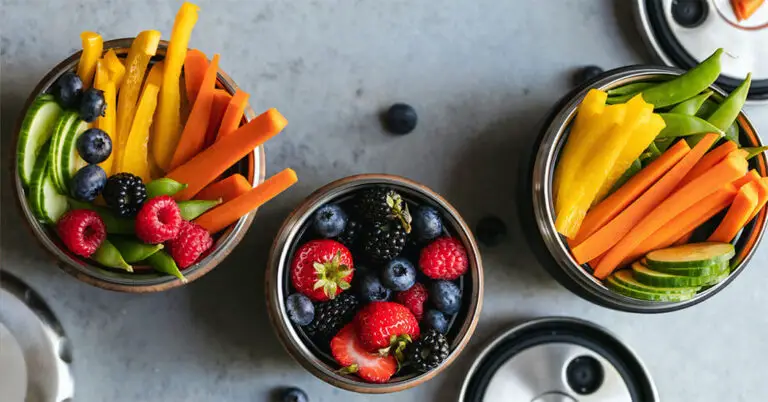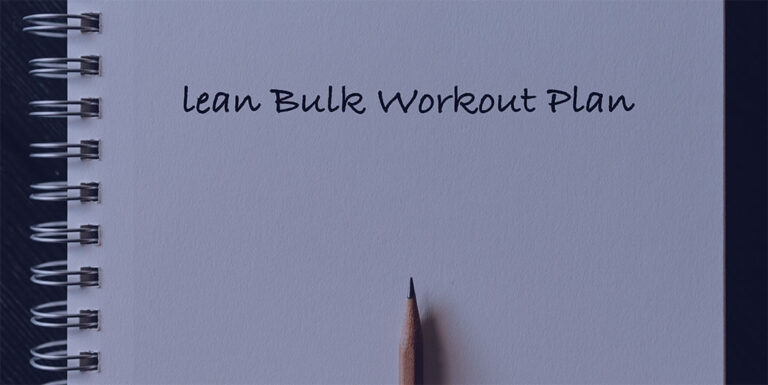Maingaining: Everything You Should Know [A Step-by-Step Guide]
Maingaining or gaintaining – the practice of maintaining your current body fat percentage while slowly trying to build muscle is a controversial topic.
Some people swear by it, while others think it’s a waste of time.
This article covers everything you need to know about maintaining – what it is, who it is for, and for who it is not for.
Moreover, the article includes a step-by-step guide on how to maingain and explains how it compares to a more traditional bulking and cutting method.
Jump to sections:
- What Is Maingaining
- Can You Build Muscle Without a Caloric Surplus?
- Who Is Maingaining For?
- Who Is Maingaining Not For?
- Optimal Body Fat Percentage for Maingaining
- How to Maingain
- Maingaining vs Bulking and Cutting (Pros and Cons)
What is Maingaining
Maingaining, also known as gaintaining is the practice of keeping your current body fat percentage while slowly increasing muscle mass over time.
The claim for maingaining is that if you’re willing to gain muscle very slowly, you can maintain your body fat level, and you get to enjoy staying lean year-round. You don’t have to go through the process of bulking and then losing all the excess body fat later.
The body can use only a limited number of surplus calories to build new muscle and anything above that will be stored as fat. Therefore, the theory behind maingaining is that you only need to be eating about at a 30-40 calorie surplus.
But the reality is that nobody can track that accurately.
So, it is better to just eat about your caloric maintenance.
Some people also like to implement a maingaining phase after their lean bulking diet phase, before starting a cutting diet phase.
You can look at it as a transition period, where you focus on progression in training and setting up some good nutrition habits before going into a caloric deficit.
SUMMARY
Maintaining is the practice of maintaining your body fat percentage while slowly increasing muscle mass over time. This allows you to stay lean year-round. Some people implement a maingaining phase after their bulking phase, before starting a cut.
Can You Build Muscle Without a Caloric Surplus?
Building muscle does not always require a calorie surplus. You can slowly build muscle while having the same body fat percentage. That’s gaintaining.
It has also been shown in numerous studies that it’s possible for trained individuals to build muscle and lose fat at the same time (1). That’s known as body recomposition.
In this scenario, body weight may not even increase at all – body fat weight is lost and muscle weight replaces it.
However, maingaining usually works for people in certain situations:
- Novice and intermediate lifters – untrained individuals can gain muscle mass without a caloric surplus and even while being in a caloric deficit. This is also known as newbie gains.
- People who are coming back from a layoff – if you have taken a break from lifting, lost muscle and now want to regain it, you can quickly regain most of the muscle mass back thanks to muscle memory. You don’t need to eat at a caloric surplus to do this.
- Individuals with moderate or high body fat percentage – people most likely to gain muscle without a caloric surplus are those having at least a moderate or high amount of body fat.
SUMMARY
It is possible to successfully maingain – build muscle without a caloric surplus. But following this method will result in much slower gains. Furthermore, it might not be a suitable approach for individuals at all levels of training experience and body composition.
Who Is Maingaining For?
As mentioned previously, maingaining usually works best for people that:
- Are novices or intermediates
- Have trained in the past, lost muscle and want to regain it back
- Have moderate to high body fat percentage
Additionally, there are more reasons where it would make sense to consider maingaining:
- You want to maintain consistent eating patterns and diet
- You are happy with your current physic but would like to add more muscle and/or strength
- You don’t want to go through bulking and cutting cycles
- As an athlete, you might have to stay at a certain bodyweight but still would like to improve strength/performance
Maingaining typically appeals to people who perhaps already have a significant amount of muscle, and want to stay lean all year round while still building some muscle and/or increasing strength. It’s also popular among women, who don’t want to add a lot of overall body weight or muscle bulk.
When maingaining, you are able to enjoy your training and diet, and have fun while slowly building muscle.
However, maingaining is not the optimum way of gaining muscle.
More on this in a bit…
SUMMARY
Maintaining usually works best for people who are novices or intermediates, have trained in the past and lost muscle, and have a moderate to high body fat percentage. It also appeals to people who want to stay lean all year round, build some muscle, and/or increase strength.
Who Is Maingaining Not For?
However, maingaining is not beneficial for the following groups of people:
- For hard-gainers – individuals with a very fast metabolism or who have trouble gaining weight in general. In this case, it’s best to be in a small to moderate caloric surplus (200 – 400 calories) in order to build muscle.
- For people with a very low body fat percentage – gaintaining is not possible for those that are very lean. With a body fat of lower than 12% body fat (men) and 20% (women). Very low body fat levels are not maintainable in the long term and trying to be extremely ripped while adding muscle is impossible. In fact, the opposite typically occurs – you start to lose muscle. So, for this group of people, it’s best to get to a healthy body fat level before even considering a maingaining phase.
- For individuals that are very overweight – maingaining is not recommended as, the goal of the approach is to stay lean while gaining muscle, not gaining muscle while having a high body fat percentage.
- For people that want to maximize muscle gains – maingaining is not the most optimal way of gaining muscle mass in the shortest time possible. In my opinion, following a more traditional lean bulking and cutting cycles would be more suited for people looking to maximize muscle gains.
SUMMARY
Maingaining is not beneficial for people with a low body fat percentage, hard-gainers, people that are very overweight, and individuals looking to maximize muscle growth.
Optimal Body Fat Percentage for Maingaining
For the majority of people, the most optimal body fat percentage for maingaining is around 12-20% for men and 20-30% for women.
This means that before starting a maingain, you want to be at a healthy body fat percentage.
One of the main reasons why maingaining does not work for people is because they try to do it at a very low body fat level. The leaner you are, the higher the risk of losing muscle. If you’re already very lean/ripped, you can forget about gaining muscle while maintaining the same body fat level – the goal, in this case, is simply to hold on to the muscle you have.
That said if you’re at a healthy body fat percentage, you will be able to gain some muscle while maintaining the current body fat level.
SUMMARY
The most optimal body fat percentage for maingaining is around 12-20% (men) and 20-30% (women). If you are already very lean, you will not be able to gain muscle while maintaining the same body fat level – you will simply be holding on to the muscle you have. And if you are above the mentioned body fat percentages then you might need to lose some fat first.
How to Maingain
Here are the steps you should follow to maingain successfully.
1. Determine Your Maintenance Calories
Your maintenance calories are the number of calories you need to eat per day to neither gain nor lose weight – to maintain your current body weight.
In order to maingain, your body can only use a limited number of surplus calories (calories above maintenance) to build new muscle and anything above that will be stored as fat.
In theory, you should only be eating about a 40 kcal surplus to maingain but the reality is that nobody can track that accurately.
So, it’s recommended that you just eat about your caloric maintenance.
To find your maintenance level, you can use a TDEE calculator or estimate it yourself by eating at maintenance for a few weeks and seeing how your body responds.
If you gain weight, you’re eating too much and if you lose weight, you’re not eating enough. You want to find the number of calories where your weight stays the same.
Once you know your maintenance level, you can move on to the next step.
2. Calculate Your Maingaining Macros
Next, you will need to calculate your macros for maingaining.
Most importantly, you want to make sure that you eat enough protein when maingaining. A sufficient daily protein intake for most individuals would be around 0.7g/lb or 1.6g/kg of body weight (2).
I personally like to have a higher protein intake of about 1.1g/lb of body weight or 2.4g/kg of body weight. Mainly due to a higher protein intake being more satiating (makes you feel fuller).
Fat intake should be around 20-30% of your total calories, while the rest of the calories would come from carbohydrates.
3. Track Daily Food Intake or Follow a Meal Plan
Then you will need to ensure you are properly tracking your food intake – including calories and macros.
I recommend using a calorie and macronutrient tracking app like MyFitnessPal or a calorie tracking spreadsheet. I personally prefer the latter as it helps you track nutrients more precisely and minimizes the likelihood of hitting macros but not calories.
Simply enter all the foods you eat throughout the day and make sure you are reaching (or close to reaching) your daily calorie and macro targets.
Don’t obsess about hitting your macros to the gram but try to get as close as possible.
Recommended Reading:
4. Emphasize Weighlifting to Maximize Muscle Gains
You should be lifting weights at least 3 times per week if you want to build muscle over time.
Make sure to focus on compound exercises that engage multiple muscle groups simultaneously. This includes movements like squats, deadlifts, rows, overhead presses, chest presses, and others.
These exercises will help you build the most muscle in the shortest amount of time.
In addition to compound exercises, you can also do isolation exercises to target specific muscles groups.
But don’t neglect the big lifts. Roughly 60-80% of your time in the gym should be spent on compound exercises while 20-40% can be on isolation exercises. Isolation exercises such as biceps curls, triceps pushdowns, side lateral raises, and others are great for bringing up weaker muscle groups.
Most importantly, when it comes to workouts, you should lift heavier weights over time (progressive overload your muscles) to continue building muscle. This can be done by adding more weight to the bar, doing more repetitions with the same weight, or decreasing the amount of time taken to rest between sets.
Furthermore, to ensure you are progressing I recommend tracking your workout sessions. You can use my free Google Sheets workout template, which lets you create your own workout program and keep track of the progress, including sets, repetitions, weight, and total workload/volume.
5. Prioritize Sleep Quality and Quantity
Another important factor that may influence your body composition is the quality and quantity of sleep.
You need to get a good night’s sleep if you want your body to gain muscle. When you’re asleep, your body repairs and rebuilds the muscles that you worked hard in the gym that day.
Although it isn’t fully understood, a factor such as sleep may affect body composition changes, according to some studies. Specifically, one study examined the effects of sleep restriction on weight loss outcomes (3). The results showed that both groups lost a similar amount of total body weight. However, when analyzing the percentage of muscle mass within total mass lost, the sleep-restricted group (restriction of around 1-hour, 5-days a week) lost significantly more muscle mass.
So if you’re looking to maingain, make sure you get at least 7-8 hours of quality sleep each night.
6. Track Your Progress
Maingaining takes time.
A lot of time…
When maingaining, your weight should go up very slowly. This means that you won’t see results overnight. But if you stick with it, you will eventually see changes in your body composition.
To track your progress, I recommend taking progress photos every month.
In addition to photos, you can also use a tape measure to track changes in body parts such as your chest, waist, hips, and arms.
Weighing yourself regularly will also help you track your progress and ensure that you are gaining weight at an optimal rate.
Try to aim for a weight gain of about 0.5 lb per week or even lower if you are an intermediate (2+ years of training experience) or advanced lifter (5+ years of training experience).
SUMMARY
In order to maingain, you should eat at caloric maintenance, consume enough protein, ensure you are following your calories and macros, emphasize weightlifting, get quality sleep, and track your progress.
Maingaining vs Bulking and Cutting (Pros and Cons)
As discussed so far, with maingaining, you eat enough to keep your current body fat percentage while slowly adding muscle.
This is different from the traditional approach of bulking and cutting, where you eat in a caloric surplus to gain weight (in a form of both muscle mass and body fat), and then lose the excess body fat to look lean while maintaining the lean muscle mass.
There are pros and cons to both maingaining as well as traditional bulking and cutting approaches.
Maingaining
| Pros | Cons |
|---|---|
| allows staying lean year-around | slower muscle and strength gains |
| allows for consistently good athletic movement | takes time to see noticeable changes |
| promotes a healthier approach to eating | requires following certain calories and macros year-around |
Bulking and Cutting
| Pros | Cons |
|---|---|
| promotes faster muscle and strength gains | may lead to excess fat gains when bulking |
| takes less time to see noticeable changes | slight muscle loss is common when cutting |
| easier to achieve 100% muscle growth potential | you may feel hungry when cutting and too full when bulking |
With maingaining, you don’t have to worry about getting fat since you’re eating around maintenance. However, the downside is that it can be more difficult to add muscle mass this way since you’re not eating in a caloric surplus.
With the traditional bulking and cutting approach, you can more easily add muscle mass since you’re eating in a caloric surplus. However, the downside is that you will have to lose the excess body fat afterwards, which can be time-consuming, more challenging, and put you at risk of losing some of the muscle that you built.
So, which method is better? It depends on your goals and preferences.
If you want to add muscle mass as quickly as possible and don’t mind adding some body fat, then the traditional bulking and cutting approach is probably better for you.
But if you’re more concerned with maintaining a lean physique and are okay adding muscle slowly over time, then maingaining might be the way to go.
In my opinion, maingaining is definitely worth a try.
If you find that it works for you and you gain noticeable gains, then keep on doing that. There is no reason to change something that already works.
On the other hand, if you noticed that you haven’t gained any bodyweight in months, and your body composition did not change either, then it might be time to re-evaluate your strategy and consider going into a caloric surplus to bulk up.
At the end of the day, it’s unlikely that you will be able to achieve 100% muscle growth potential with no fat gain over an extended period of time.
How about reaching 90% lean mass, or at least 80%?
It might be possible if you have the patience to stick to a maingaining approach.
Recommended Reading: How to Cut After Bulking: The Ultimate Guide
Final Thoughts
Maingaining can be a great way to add muscle mass while maingaining the body fat percentage.
Contrary to traditional bulking and cutting where you eat in a caloric surplus to gain weight and then lose the excess body fat to look leaner, maingaining allows you to stay lean year-around while slowly building muscle.
It might not be the best option for everyone, but if you are willing to stay consistent and put in the hard work, it can be an effective approach.
Have you tried maingaining?
Let me know about your experience in the comments below!
References
1. Barakat C, Pearson J, Escalante G, Campbell B, De Souza EO. Body Recomposition: Can Trained Individuals Build Muscle and Lose Fat at the Same Time? (2020). Retrieved from https://journals.lww.com/nsca-scj/Fulltext/2020/10000/Body_Recomposition__Can_Trained_Individuals_Build.3.aspx
2. Morton RW, Murphy KT, McKellar SR, Schoenfeld BJ, Henselmans M, Helms E, Aragon AA, Devries MC, Banfield L, Krieger JW, Phillips SM. A systematic review, meta-analysis and meta-regression of the effect of protein supplementation on resistance training-induced gains in muscle mass and strength in healthy adults (2018). Retrieved from https://pubmed.ncbi.nlm.nih.gov/28698222/
3. Wang X, Sparks JR, Bowyer KP, Youngstedt SD. Influence of sleep restriction on weight loss outcomes associated with caloric restriction (2018). Retrieved from https://pubmed.ncbi.nlm.nih.gov/29438540/






